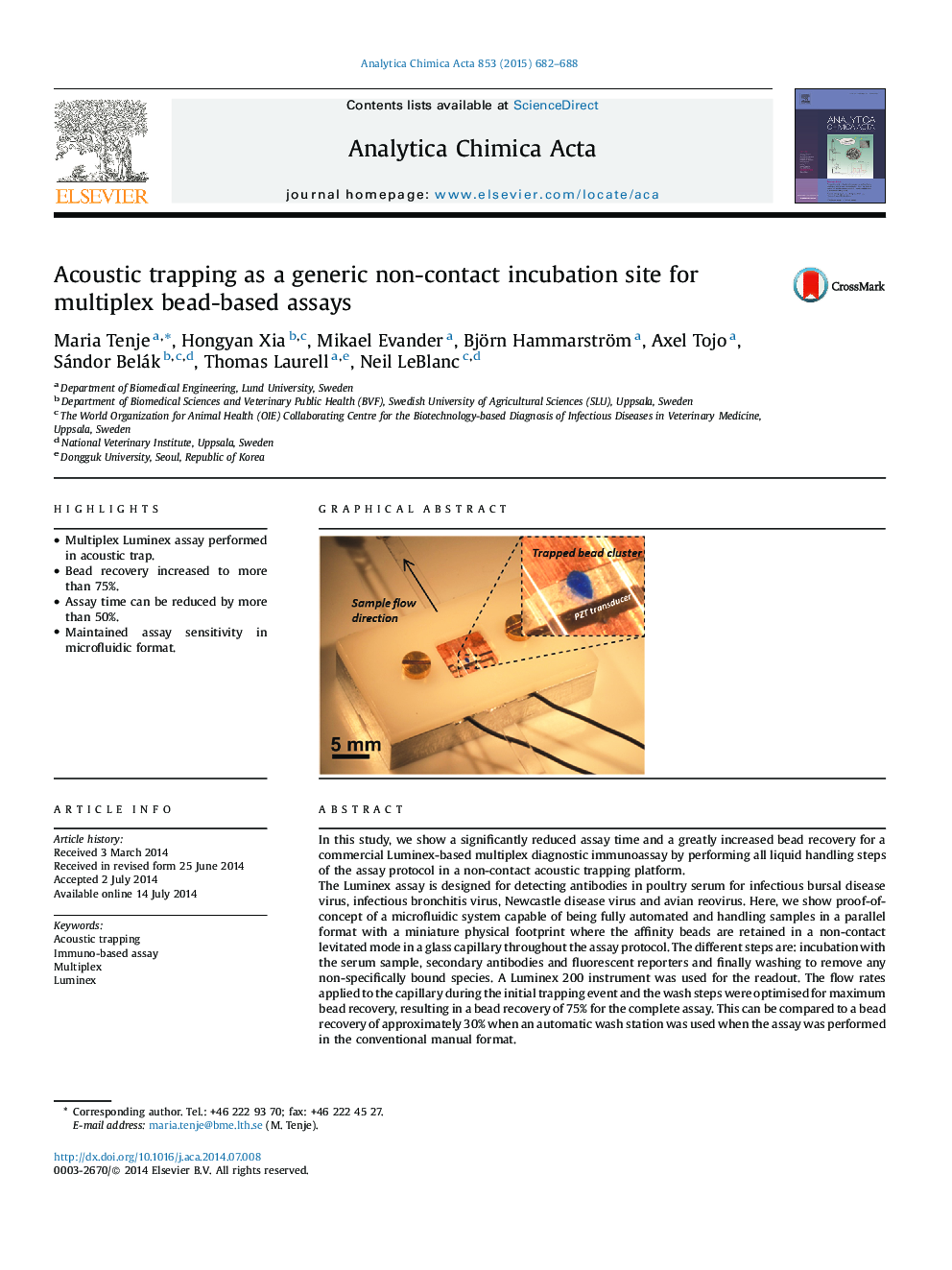| Article ID | Journal | Published Year | Pages | File Type |
|---|---|---|---|---|
| 1163713 | Analytica Chimica Acta | 2015 | 7 Pages |
•Multiplex Luminex assay performed in acoustic trap.•Bead recovery increased to more than 75%.•Assay time can be reduced by more than 50%.•Maintained assay sensitivity in microfluidic format.
In this study, we show a significantly reduced assay time and a greatly increased bead recovery for a commercial Luminex-based multiplex diagnostic immunoassay by performing all liquid handling steps of the assay protocol in a non-contact acoustic trapping platform.The Luminex assay is designed for detecting antibodies in poultry serum for infectious bursal disease virus, infectious bronchitis virus, Newcastle disease virus and avian reovirus. Here, we show proof-of-concept of a microfluidic system capable of being fully automated and handling samples in a parallel format with a miniature physical footprint where the affinity beads are retained in a non-contact levitated mode in a glass capillary throughout the assay protocol. The different steps are: incubation with the serum sample, secondary antibodies and fluorescent reporters and finally washing to remove any non-specifically bound species. A Luminex 200 instrument was used for the readout. The flow rates applied to the capillary during the initial trapping event and the wash steps were optimised for maximum bead recovery, resulting in a bead recovery of 75% for the complete assay. This can be compared to a bead recovery of approximately 30% when an automatic wash station was used when the assay was performed in the conventional manual format.The time for the incubation steps for a single assay was reduced by more than 50%, without affecting assay performance, since intermediate wash steps became redundant in the continuously perfused bead trapping capillary. We analyzed seven samples, in triplicates, and we can show that the readout of the assay performed in the acoustic trap compared 100% to the control ELISAs (positive or negative readout) and resulted in comparable S/P values as the conventional manual protocol. As the acoustic trapping does not require the particles to have magnetic properties, a greater degree of freedom in selecting microparticles can be provided. In extension, this can provide an opportunity to develop cheaper and more effective microparticles.
Graphical abstractFigure optionsDownload full-size imageDownload as PowerPoint slide
